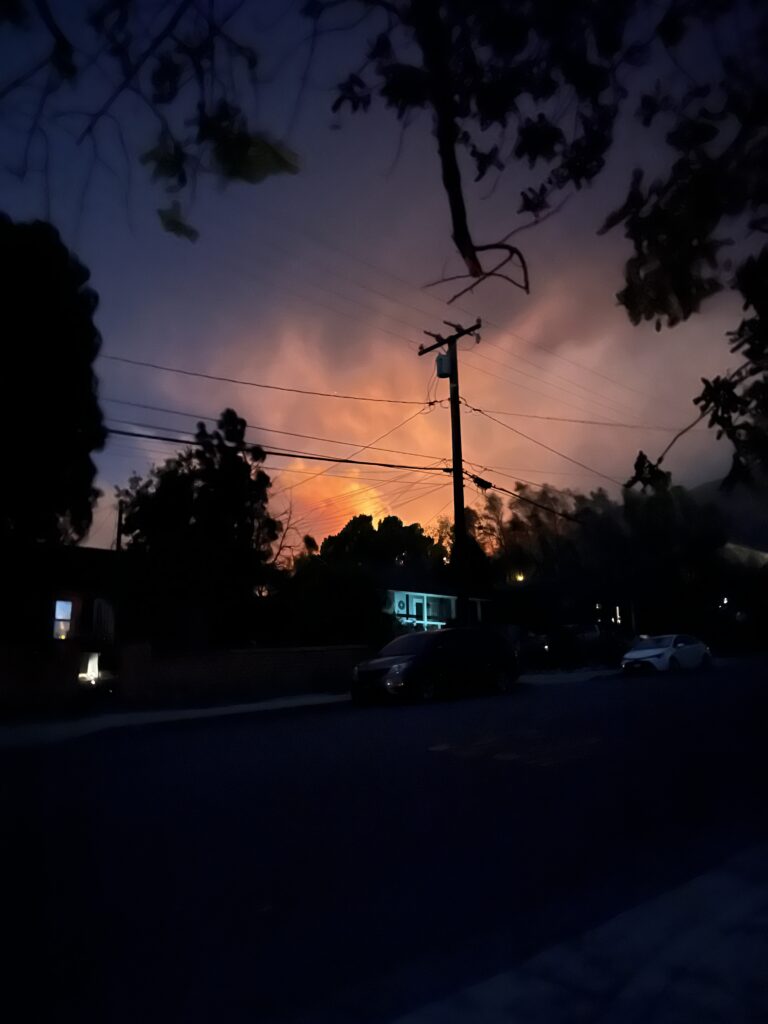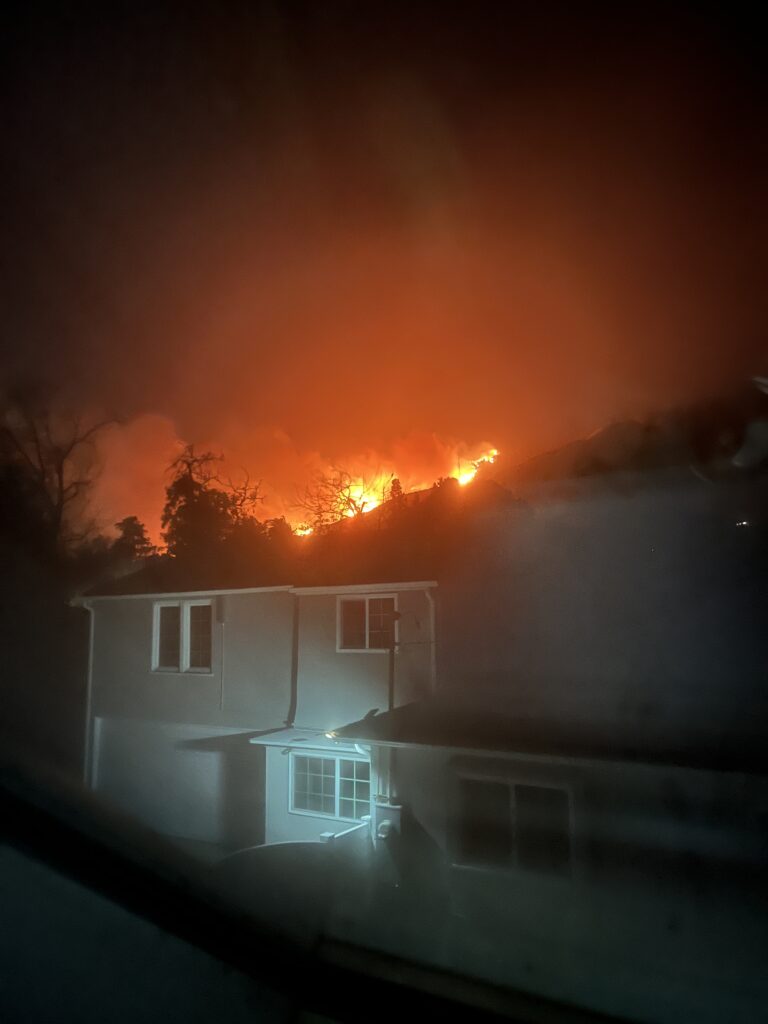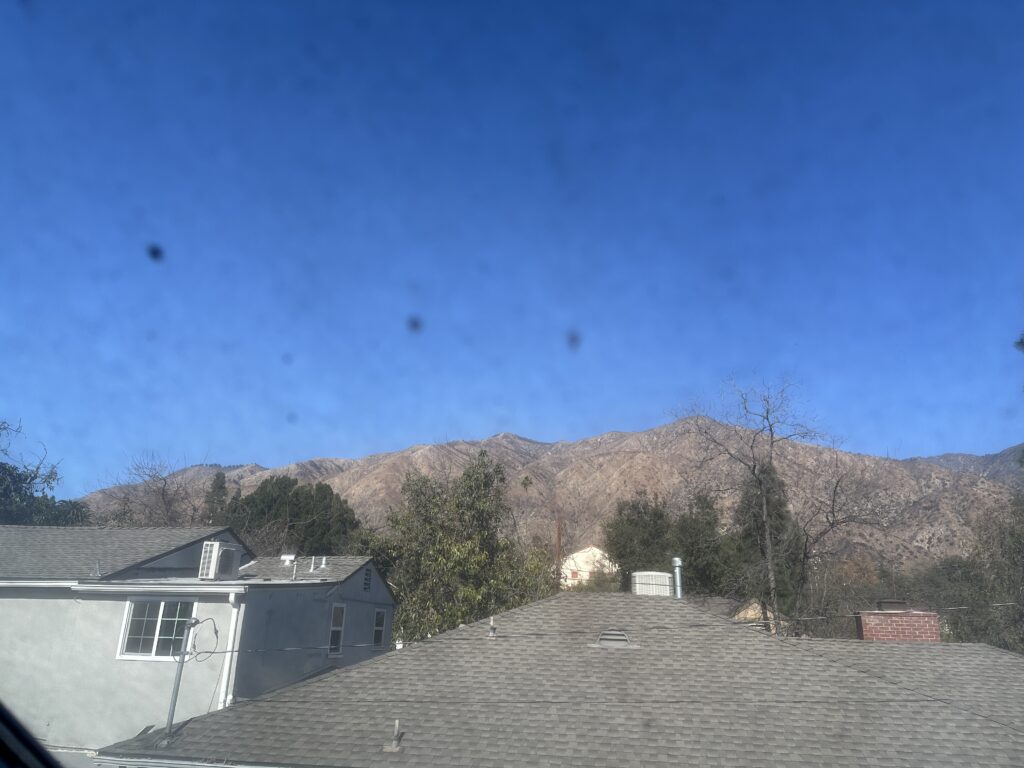
By Paul Breton
For many of us in Southern California, 2025 has not started off according to plan.
I’ve practiced and coached crisis communications and issues management in some capacity for more than 25 years. I’ve developed playbooks, imagined and led table-top trainings, and been in the trenches through countless types of crisis scenarios. I’ve trained C-suite and comms leaders how to anticipate and respond to unexpected circumstances. I’ve preached that preparation and practice are critical to successfully navigate a rapidly evolving crisis situation, when facts are scarce, time is of the essence and there’s always someone ready to fill an information vacuum.
I never thought I’d use these skills with my own family. But it happened last week on Jan. 7, when the Eaton Fire came within two miles of my home.
(I’m incredibly fortunate and grateful my loved ones are safe and I had a home to return to. Thousands of my neighbors and people across Southern California weren’t so lucky.)
This is my reflection on the crisis communications skills I relied on during the most intense and challenging moments. It’s also my observations about how trustworthy information disseminated and spread – and how it wasn’t.
Putting the Stoplight Framework Into Action
In hindsight, I fortuitously spent December developing crisis protocols for a new client. I had the stoplight framework top of mind. Even though I didn’t tell my wife and kids in the moment I used it to make decisions, I absolutely did. And I told them later, so they could also use it in the future.
The framework is intentionally simple and modeled after a common stoplight:
- Green is a low-risk situation. No action is needed.
- Yellow means there’s an elevated risk. You don’t take any immediate action, but you start preparing a response and keep a close eye on how things evolve.
- Orange is an escalating situation. You mobilize resources and begin to act cautiously. (I know, orange isn’t a color in an actual stoplight, but it works in this framework.)
- Red is a full-scale crisis. Or in this case, an out-of-control and rapidly spreading wildfire.
What makes this framework useful is that you can quickly assess risk and calibrate your response.
As the Santa Ana winds gained force throughout the afternoon, making it difficult to walk outside, we were in stage yellow. We started packing “go-bags,” gathering important documents and keepsakes, and making plans for where we would go if we had to get out.
When we lost power around 6:30 p.m., the situation escalated to orange. Our flashlights were already laid out on the dining room table. We loaded the cars and were on high alert to see if and when evacuation orders would be issued. At the same time, we tried really hard not to panic, at least not visibly in front of our teenage kids. We reviewed the game plan in detail for where we’d go, how we’d get there and what we’d do next. We played board games by flashlight to divert our attention. And for an hour and a-half, we literally and figuratively waited in the dark to see what would need to happen next.
Finally, around 10 p.m., as we looked out the skylight in an upstairs bedroom and saw flames shooting across the mountainside a few miles away, we made the call. Code red. Time to act and get the hell out of harm’s path. Fast!

The Most Reliable Information Came From the Least-Expected Sources
As someone who practices media relations for a living, I find it curious I didn’t rely on any traditional news reports until more than 12 hours after we evacuated. They were too slow and didn’t have the real-time information we needed to make critical decisions. I also didn’t rely broadly on social media.
Instead, my information sources were intensely local and highly specialized. Text messages among various friend groups flooded my phone. We checked on each other, shared plans and tipped each other off to resources, such as the Watch Duty app. (I highly recommend it and was fixated for days.) Nixle alerts from the city gave timely updates on evacuation status.
We often counsel clients to communicate inside-out during a crisis, meaning start with your inner-most circle and keep them the most informed. Then, expand to other important stakeholders as updates are available and the situation evolves.
This experience made me rethink the most effective ways to do that. Short messages and real-time alerts from known and trusted sources are more valuable than thorough reports and carefully crafted messages. Case in point – Edgar McGregor, a 24-year-old local climate expert who operates the “Altadena Weather And Climate” Facebook page is credited with saving hundreds of lives with a two-word post: “Get out!”
I also followed the counsel we give to clients to set expectations around communications. I received an outpouring of supportive messages from colleagues across the globe. While I appreciated all of them, I also needed to prioritize and wasn’t in the headspace to type lengthy replies to each. Instead, I established that I’d send one daily update to my teams, senior leaders and direct reports, relying on them to cascade the information to others who needed it.
The Smoke Clears, Eventually

Four days after we evacuated, we got the all-clear to return. Unlike many of our friends and neighbors, I was fortunate my home was intact.
Breaking down fallen palm tree fronds and sweeping other debris from my front yard, I heard firefighting helicopters flying across the San Gabriel mountainside. I looked up and could see the mountains for the first time since the ordeal began.
They looked different; now charred brown and black from where the fire ripped through. But they were no longer shrouded in smoke and flames. The sky was bluer than I’d recalled seeing it in quite some time. And I was reminded of the adage, “This too shall pass.”
Paul is a managing director on Allison’s Corporate Affairs team, based in Los Angeles. A native Southern Californian, he leads the agency’s team that specializes in fintech and financial services. His areas of expertise include corporate brand building, corporate reputation management, executive visibility and thought leadership, internal communications and employee engagement, corporate narrative development, crisis and issues management, and social impact and cause marketing.